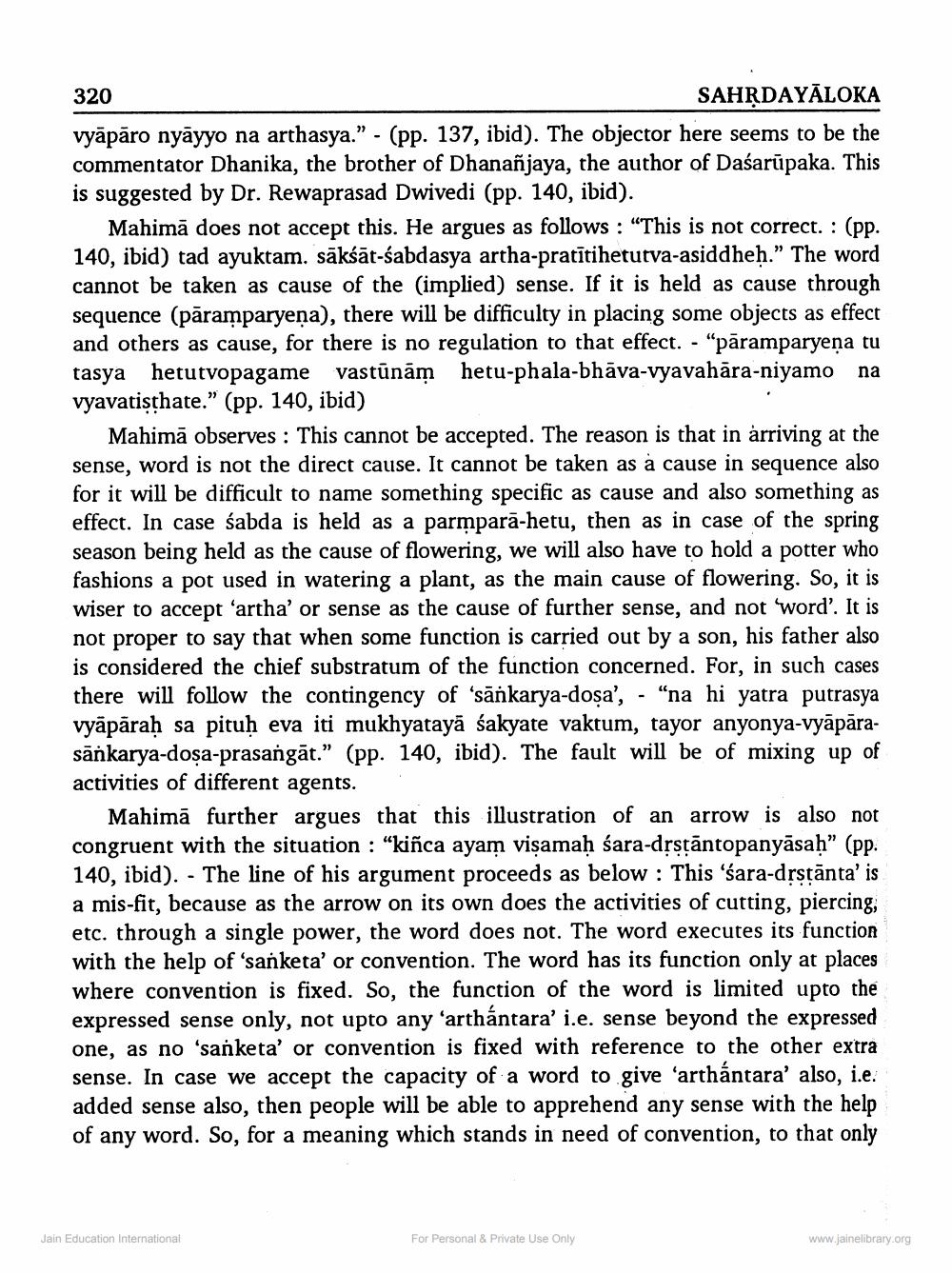________________
320
SAHRDAYĀLOKA vyāpāro nyāyyo na arthasya." - (pp. 137, ibid). The objector here seems to be the commentator Dhanika, the brother of Dhananjaya, the author of Daśarūpaka. This is suggested by Dr. Rewaprasad Dwivedi (pp. 140, ibid).
Mahimā does not accept this. He argues as follows : “This is not correct. : (pp. 140, ibid) tad ayuktam. sākśāt-śabdasya artha-pratītiheturva-asiddheh.” The word cannot be taken as cause of the (implied) sense. If it is held as cause through sequence (pāramparyena), there will be difficulty in placing some objects as effect
ers as cause, for there is no regulation to that effect. - "paramparyena tu tasya hetutvopagame vastūnām hetu-phala-bhāva-vyavahāra-niyamo na vyavatisthate.” (pp. 140, ibid)
Mahimā observes : This cannot be accepted. The reason is that in arriving at the sense, word is not the direct cause. It cannot be taken as a cause in sequence also for it will be difficult to name something specific as cause and also something as effect. In case sabda is held as a parmparā-hetu, then as in case of the spring season being held as the cause of flowering, we will also have to hold a potter who fashions a pot used in watering a plant, as the main cause of flowering. So, it is wiser to accept 'artha' or sense as the cause of further sense, and not 'word'. It is not proper to say that when some function is carried out by a son, his father also is considered the chief substratum of the function concerned. For, in such cases there will follow the contingency of 'sāńkarya-dosa', - “na hi yatra putrasya vyāpārah sa pituh eva iti mukhyatayā sakyate vaktum, tayor anyonya-vyāpārasāńkarya-dosa-prasangāt.” (pp. 140, ibid). The fault will be of mixing up of activities of different agents.
Mahimā further argues that this illustration of an arrow is also not congruent with the situation : “kiñca ayam visamaḥ śara-drstāntopanyāsah” (pp. 140, ibid). - The line of his argument proceeds as below : This 'sara-drstānta' is a mis-fit, because as the arrow on its own does the activities of cutting, etc. through a single power, the word does not. The word executes its function with the help of 'sanketa' or convention. The word has its function only at places where convention is fixed. So, the function of the word is limited upto the expressed sense only, not upto any ‘arthántara' i.e. sense beyond the expressed one, as no 'sanketa' or convention is fixed with reference to the other extra sense. In case we accept the capacity of a word to give 'arthantara' also, i.e. added sense also, then people will be able to apprehend any sense with the help of any word. So, for a meaning which stands in need of convention, to that only
Jain Education International
For Personal & Private Use Only
www.jainelibrary.org




